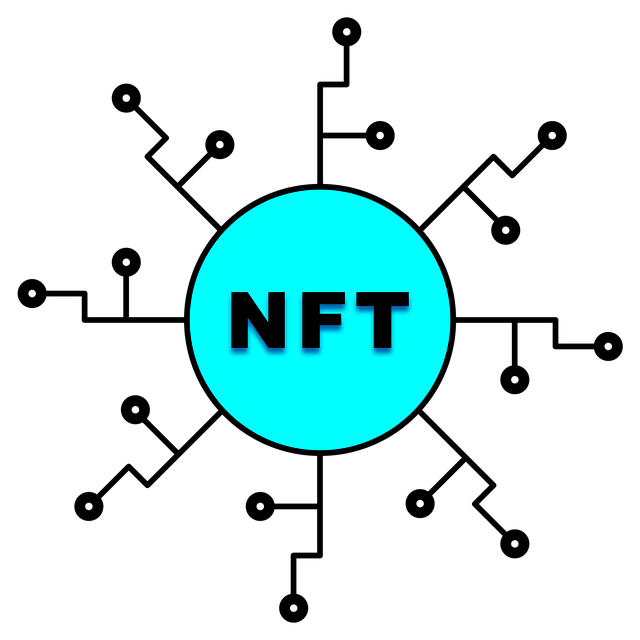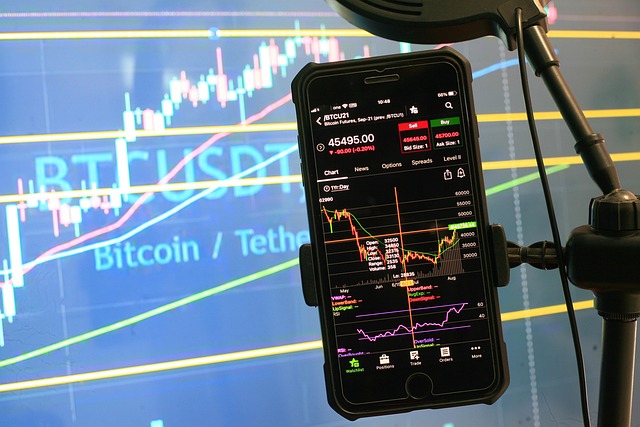Creating a Crypto Trading Bot: Step-by-Step Guide
Author: Jameson Richman Expert
Published On: 2025-11-11
Prepared by Jameson Richman and our team of experts with over a decade of experience in cryptocurrency and digital asset analysis. Learn more about us.
Creating a crypto trading bot can automate execution, reduce emotional bias, and run strategies 24/7 across exchanges. This guide explains the technical architecture, strategy design, backtesting, deployment, and risk controls you need to build a production-ready crypto trading bot — with actionable examples, recommended libraries, testing methodology, and resources to get started quickly and safely.

Why build a crypto trading bot?
Automated trading bots provide several advantages over manual trading:
- Speed and execution: Bots execute orders instantly, far faster than humans.
- Discipline: They follow rules consistently, eliminating emotional mistakes.
- 24/7 operation: Crypto markets never sleep — bots can monitor and trade continuously.
- Backtesting and optimization: Strategies can be evaluated on historical data before risking capital.
- Scalability: One bot can manage many pairs, timeframes, or strategies simultaneously.
Overview: components of a crypto trading bot
A reliable bot typically includes these components:
- Market data ingestion: Historical and live price feeds.
- Strategy engine: Indicator calculation, signal generation.
- Execution module: Order placement, fills, cancellations.
- Risk manager: Position sizing, stop losses, exposure limits.
- Backtesting engine: Simulate strategy on historical data.
- Monitoring and logging: Metrics, alerts, and error handling.
- Deployment and infrastructure: Cloud or VPS, containerization, redundancy.
Prerequisites: skills and tools
Before starting, ensure you have:
- Programming skills (Python recommended for speed of development).
- Understanding of trading concepts: liquidity, slippage, spread, order types.
- Access to exchange APIs (create API keys with appropriate permissions).
- Version control (Git), testing frameworks, and a secure secrets manager.

Choose the right exchanges and accounts
Different exchanges offer varying APIs, liquidity, and fee structures. Popular choices include Binance, Bybit, Bitget, and MEXC. If you’re signing up, you can use these links:
- Register on Binance — large liquidity and mature APIs.
- Register on MEXC — competitive fees and derivatives.
- Register on Bitget — derivatives and copy trading options.
- Register on Bybit — derivatives-focused with powerful APIs.
Use accounts with the minimum required permissions for trading — avoid enabling withdrawal permissions for keys used in automation.
Data sources and market data
High-quality market data is essential. You’ll need:
- Historical candles/ticks: For backtesting.
- Real-time websockets: For low-latency signal execution.
- Order book snapshots & trades: For market-making or microstructure strategies.
Primary sources:
- Exchange APIs (e.g., Binance API documentation: Binance API docs).
- Unified libraries like CCXT (GitHub) to standardize REST endpoints.
- TradingView for indicator testing and charting: TradingView.
Strategy selection: common bot strategies
Choose a strategy that suits your risk tolerance and the assets you trade. Examples:
- Trend following: Moving average crossovers, breakout strategies.
- Mean reversion: RSI oversold/overbought, Bollinger Bands reversion.
- Scalping: Very short-term, requires low latency and tight spreads.
- Market making: Place both bid and ask to capture spread — needs firm risk controls.
- Arbitrage: Exploit price differences between exchanges — requires fast transfers or cross-exchange inventory.
Example strategy: simple moving average crossover
This is a good starter strategy to learn signal flow and backtesting:
- Long when SMA(50) crosses above SMA(200).
- Exit when SMA(50) crosses below SMA(200) or when stop loss hits.
- Position size: fixed fraction or volatility-adjusted.

Designing architecture: components and flow
Design your bot with modularity:
- Fetcher: Pulls real-time market data (websocket preferred).
- Indicator engine: Computes indicators incrementally for efficiency.
- Signal manager: Applies strategy logic and filters (e.g., time-based filters).
- Execution layer: Places orders, monitors fills, retries on failures.
- Risk engine: Position sizing, maximum exposure, single-order limits.
- Persistence: Database for trades, PnL, logs (Postgres, TimescaleDB, or lightweight SQLite for prototypes).
- Monitoring: Alerts via email/Telegram/Slack and dashboards.
Implementation: languages and libraries
Common stacks:
- Python — Excellent libraries (pandas, TA-Lib, NumPy), CCXT for exchange wrappers, Backtrader or Zipline for backtesting.
- Node.js — Good for high-concurrency websockets and APIs; CCXT is available in JS too.
- Go or Rust — For production-grade low-latency systems (higher development cost).
Recommended libraries and resources:
- CCXT — unified exchange interface for REST (supports many exchanges).
- TradingView — for indicator visualization and Pine Script testing.
- Algorithmic trading (Wikipedia) — background on automated trading concepts.
Code example: SMA crossover using CCXT (Python)
Below is a simplified example to illustrate the flow. This is educational; do not run with real money without adding error handling, auth management, and risk checks.
import ccxt
import pandas as pd
import time
exchange = ccxt.binance({
'apiKey': 'YOUR_API_KEY',
'secret': 'YOUR_SECRET',
})
symbol = 'BTC/USDT'
timeframe = '1h'
limit = 500
def fetch_ohlcv():
ohlcv = exchange.fetch_ohlcv(symbol, timeframe=timeframe, limit=limit)
df = pd.DataFrame(ohlcv, columns=['ts','open','high','low','close','vol'])
df['ts'] = pd.to_datetime(df['ts'], unit='ms')
return df
def sma_signal(df):
df['sma50'] = df['close'].rolling(50).mean()
df['sma200'] = df['close'].rolling(200).mean()
if df['sma50'].iloc[-2] < df['sma200'].iloc[-2] and df['sma50'].iloc[-1] > df['sma200'].iloc[-1]:
return 'buy'
if df['sma50'].iloc[-2] > df['sma200'].iloc[-2] and df['sma50'].iloc[-1] < df['sma200'].iloc[-1]:
return 'sell'
return None
while True:
df = fetch_ohlcv()
signal = sma_signal(df)
print(time.ctime(), 'Signal:', signal)
# Execution / risk management would go here
time.sleep(60*60)

Backtesting and walk-forward testing
Backtesting rigor is critical to avoid overfitting. Steps:
- Collect high-quality historical data (candle or tick-level depending on strategy).
- Implement realistic order execution model (slippage, latency, exchange fees, partial fills).
- Use walk-forward optimization: optimize parameters on an in-sample period, then test on out-of-sample data.
- Record metrics: net profit, drawdown, Sharpe ratio, win rate, average trade, and maximum consecutive losses.
Tools: Backtrader, Zipline, or custom engines with vectorized computations (pandas/numpy).
Common pitfalls in backtesting
- Survivorship bias: Avoid only using currently listed assets — the dataset should include delisted historical assets when relevant.
- Look-ahead bias: Ensure signals use only past and present data.
- Ignoring fees and slippage: Can turn a seemingly profitable strategy into a loser.
- Curve fitting: Excessive parameter tuning on historical data leads to poor live performance.
Risk management and position sizing
Good risk controls make bots survivable. Include:
- Max daily loss limit: Shut bot if losses exceed a threshold.
- Max positions/exposure: Limit total portfolio exposure and per-trade size.
- Stop loss / take profit: Hard or trailing stops to protect capital.
- Position sizing: Fixed fractional, volatility parity, or Kelly criterion (use conservative fraction of Kelly).
Example: risk 1% of account equity per trade. If equity = $10,000 and stop loss = 2% below entry, position size = (0.01 * 10000) / 0.02 = $5,000 notional.

Execution considerations
Execution reliability is crucial.
- Use limit orders where possible to control price, but monitor fill probability.
- For market orders, account for slippage and maker/taker fees.
- Implement order state machine: submit -> check status -> retry/cancel -> reconcile fills.
- Handle partial fills and failed cancellations gracefully.
Monitoring, alerting, and observability
Your bot must be observable:
- Detailed logging for all decisions and API calls.
- Metrics dashboards (Prometheus + Grafana or hosted alternatives).
- Real-time alerts for exceptions, high latency, and risk breaches via Telegram/Slack/email.
- Health checks and auto-restart strategies (supervisors, Kubernetes liveness probes).
Deployment: cloud, containers, and redundancy
Start on a reliable VPS or cloud instance with low network latency to exchange servers. For production:
- Containerize the bot with Docker for reproducibility.
- Orchestrate with Kubernetes for scaling and resilience.
- Keep secrets in secure vaults (HashiCorp Vault, AWS Secrets Manager).
- Maintain backups and database replication for trade logs and state.

Security best practices
- Never hard-code API keys; store them encrypted.
- Use API keys with minimal permissions (trading only; no withdrawals).
- Whitelist IPs for exchange keys if supported.
- Regularly rotate keys and use multi-factor authentication (MFA) on accounts.
Legal and compliance considerations
Depending on your jurisdiction, automated trading may carry regulatory obligations. Consult local laws and, if offering bots to third parties, consider licensing or registration requirements. For institutional or large-scale bots, consult a legal professional.
Advanced topics
Market making
Market making requires careful inventory management and latency control. The goal is to post competitive bid/ask quotes across multiple pairs and capture spreads. Include skewing logic to maintain target inventory and cancel quotes in volatile conditions.
Cross-exchange arbitrage
Arbitrage involves buying on one exchange and selling on another for profit. This requires:
- Funds on both exchanges (or fast transfer methods).
- Real-time monitoring of price disparities and fees.
- Fast execution; sometimes co-locating nodes reduces latency.
Machine learning and signal generation
ML can help identify patterns, but beware of overfitting. Use rigorous cross-validation and out-of-sample tests. Feature engineering, robust validation, and explainability matter. Combining ML signals with rule-based filters often yields safer results.

Testing checklist before live trading
- Unit tests for critical functions (order creation, cancel, fills).
- Integration tests against exchange testnets (if available).
- Paper trading or simulator to validate strategy logic without real funds.
- Small-size live trial with strict risk limits.
Useful tools, resources, and further reading
- General algorithmic trading overview: Algorithmic trading (Wikipedia).
- CCXT unified exchange library: CCXT on GitHub.
- Binance API docs: Binance API documentation.
- Trading signals and bots guide: Free trading signals, bots, and copy-trading guide.
- Mastering Bybit perpetuals and TradingView automation: Bybit perpetual & TradingView automation.
- Comparing brokers and signup bonuses: Guide to brokers offering free trading bonuses.
- Understanding Bitcoin dominance and macro context: Complete guide to Bitcoin dominance.
Practical example workflow: from idea to production
- Idea: SMA crossover for BTC/USDT on 1h timeframe.
- Research: Check volumes, spread, fees for BTC/USDT on exchanges (use Binance or Bybit docs).
- Prototype: Implement strategy in Python using CCXT and pandas.
- Backtest: Simulate over several years; include fees/slippage.
- Optimize: Parameter walk-forward; avoid overfitting.
- Paper trade: Connect to exchange sandbox or use simulated orders in live data.
- Deploy: Containerize and deploy on a low-latency VPS with monitoring.
- Scale: Add more pairs, risk controls, and redundancy once stable.

Practical tips from experienced bot builders
- Start simple — small, understandable strategies are easier to diagnose.
- Log everything — trades, market context, order book snapshots — this helps when debugging losses.
- Use canary deployments — run new versions in parallel with old ones on small capital to validate behavior.
- Plan for exchange outages and implement safe fail-state behavior (e.g., close positions or pause trading).
- Continuously review trades for edge cases and unexpected behaviors — human-in-the-loop is valuable in early stages.
Where to learn more and community resources
Join developer communities and forums for up-to-date tips and code examples. You can also explore turnkey trading bots and signal services if you prefer not to code from scratch. See the trading signals and bot guide for curated apps and copy-trading options: all-in-one signals, bots & copy trading guide.
Additional recommended reads
- How to automate TradingView strategies with exchanges: Mastering Bybit USDT Perpetual & TradingView automation.
- Choosing brokers and leveraging bonuses responsibly: Comprehensive guide to brokers offering trading bonuses.
- Macro context for crypto markets (Bitcoin dominance): What is Bitcoin dominance?.

Final checklist — before you go live
- Have you tested with realistic order simulation (fees/slippage)?
- Are API keys and secrets stored securely with restricted permissions?
- Do you have daily and worst-case loss limits defined and enforced?
- Is your monitoring and alerting system proven to reach you promptly?
- Have you validated behavior under network failures and exchange rate-limit conditions?
Conclusion
Creating a crypto trading bot is a multidisciplinary task combining software engineering, data science, and trading expertise. Start with a small, well-tested strategy, implement strict risk controls, and iterate using robust backtesting and walk-forward validation. Use reliable libraries like CCXT, read exchange documentation carefully, and maintain strong security practices for API keys. For curated signal apps, automated bots, or copy-trading options to augment your bot-building, see the trading signals guide linked above. If you’re ready to try exchanges with good liquidity and developer APIs, consider signing up via the referral links provided earlier to get started quickly:
If you’d like, I can generate starter code tailored to a specific strategy and exchange (for example, a complete SMA crossover bot for Binance using CCXT with order management, logging, and basic risk rules). Tell me which exchange and timeframe you prefer, and I’ll prepare a practical template.